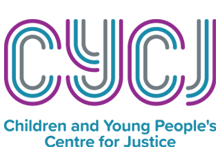In her latest blog post, CYCJ Director Claire Lightowler looks at the new Scottish Government youth justice strategy and examines how this document will influence and affect youth justice in Scotland.
A new strategy was published by the Scottish Government in June 2015 to guide our collective endeavours to improve youth justice in Scotland. The context for the strategy is some success, with recorded offences by children down by about 45% since 2007/8 and referrals to the Children’s Reporter on offence grounds down by over 80% in this period. However, the reality remains that some of our children, their families and communities are struggling to lead happy, healthy lives.
The new strategy with its title – ‘Preventing Offending: Getting it right for children and young people’ – very clearly articulates that children involved in offending need to be understand in the context of the wider GIRFEC policy (Getting it Right for Every Child). The tone indicates that these are children first, offenders second, and our response needs to be informed by this principle (interestingly a principle even more clearly articulated by the Welsh Government in their youth justice strategy).
It is not insignificant that the language has shifted from previous strategies – which talked about ‘young people’ exclusively rather than ‘children’, despite the consistent focus on those under 18. Adopting the language of ‘children’ is a clear nod to the definitions set out in the United Nation’s Convention on the Rights of the Child which defines a child as all those under 18 and requires greater attention is paid to the rights of our children in conflict with the law. It is significant that the UNCRC is referenced so clearly and serves as a reminder that the Committee on the Rights of the Child will be issuing its report on how well the UK is meeting its commitments in the summer of 2016, which is likely to have implications for some of the next steps referenced in the strategy.
The strategy articulates three priorities, the first being extending and improving the ‘Whole System Approach’. The Whole System Approach has been implemented across Scotland since 2011 and advocates principles and processes centred on early and effective intervention, diversion from prosecution, court support, community alternatives, managing high risk, and improving reintegration back into the community. To some extent this strategy encourages us to do more of the same, building on the success of the approach, ensuring we embed the approach more consistently across Scotland, and tackle some of the current gaps and unresolved issues. It is noticeable that a key focus of the new strategy is thus on sustaining and maintaining successes, a helpful reminder that this sometimes keeping hold of progress can be difficult particularly given a challenging financial climate.
The second priority in the strategy is ‘improving life chances’ which particularly focuses on preventing offending and preventing reoffending, building on a similar focus in the previous strategy- Preventing Offending by Young People: A framework for action. However, the preventative aspect in the new strategy focuses on more specific and earlier stages of prevention than before – with issues such as school inclusion, health and wellbeing, and relationships and engagement, coming for particular attention. Whilst the first priority area, the Whole System Approach, is focused on children who have committed offences, this section widens the focus to also consider how to ensure we prevent children from ever being so. This highlights the need to engage with all those working with children and young people to help ensure they understand their role in, and are able to effectively support, the prevention of offending.
The final priority is about developing capacity and supporting continuous improvement. Actions within this strategic priority area lay the groundwork for ensuring improvements identified across the other priority areas by ensuring attention is paid to developing the workforce, sharing knowledge and improving awareness, access and use of performance information, research evidence and good practice examples.
As useful as this document is, it is always important to remember it is just a piece of paper; the real work lies in identifying the actions to fall from this strategic direction and ensuring they happen. Further, it is important to acknowledge what is not in the strategy – primarily wider issues around poverty and social inclusion. Therefore, as significant as this strategy is for those working in youth justice, it is also important to engage in wider debates around issues so clearly linked to preventing offending. The recent launch of the national discussion, creating a fair Scotland, is one such opportunity for those working in youth justice to engage with if we are to ensure we really get it right for all our children and young people.

Leave a Reply
You must be logged in to post a comment.